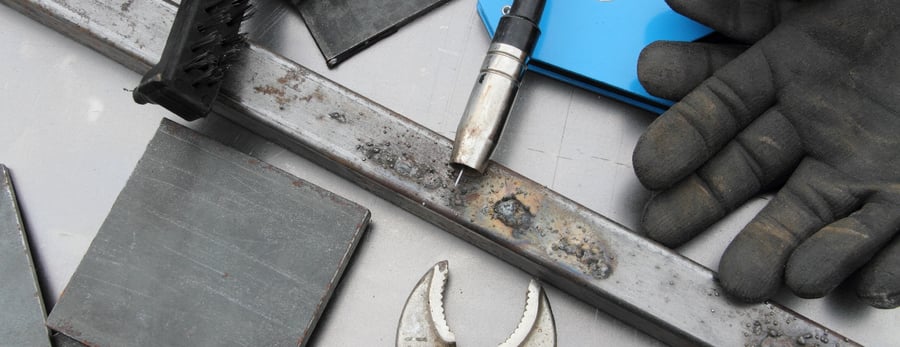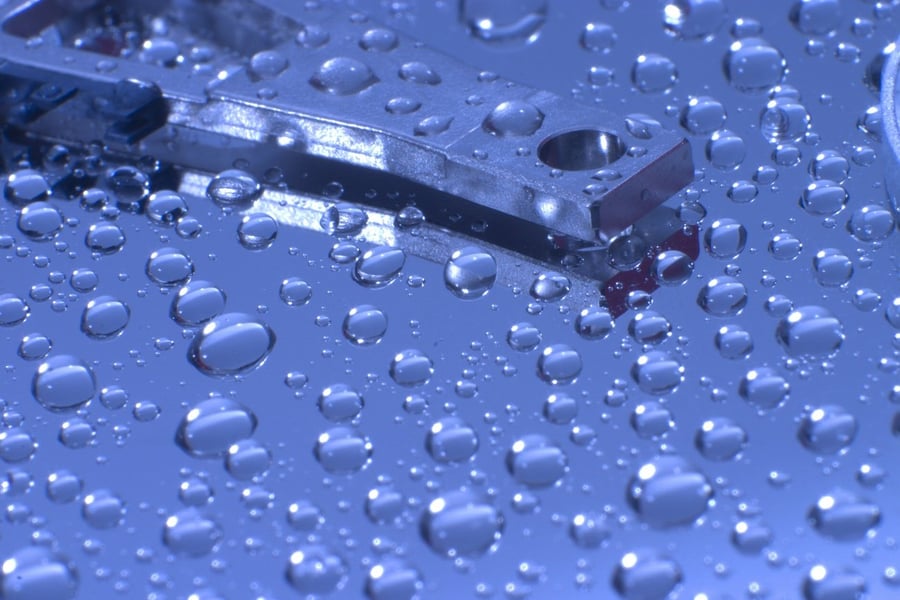How Summer Humidity Impacts Moisture in Your Home

Summertime has long been associated with warmer temperatures, trips to the beach, and more frequent calls to the A/C repair guy. However, summer weather can also affect your home by altering the average humidity and local temperatures.
Summer humidity can impact your home in a few different ways depending on where you live. Some of the possible impacts include:
Moisture Intrusion Near the Outside of the Structure
If you live near a large body of water, such as the ocean or a large lake, summer heat can bring with it increased moisture in the air during the day. At night, when temperatures begin to cool, this moisture can easily condense into water, seeping into cracks and entering the home.
Over time, this can cause damage to the areas near the exterior of the home as the moisture promotes the growth of mold and bacteria.
The best DIY fix for this is to check the exterior of the home for cracks or gaps where moisture condensation could get in and seal the gaps. Also, applying a sealant to exposed wood materials can help keep water from compromising it.
Pest Infestations
If excess moisture from the outside is allowed to sit in any structure for long, it can attract pests such as roaches, termites, and mice. These common pests, once allowed to establish themselves into a home, can become an incredible nuisance— as well as a danger to residents.
Cockroaches and other pests can spread disease. Rats can chew through power cables, insulation, and air conditioning vents. Termites can eat through wood and weaken the structure of a home.
Once pests have established themselves, it can take a lot of work on the part of a dedicated specialist to remove them from a structure completely. And, it can take another set of experts to undo the damage these pests cause in the meantime.
Warping, Cupping, and/or Buckling of Wood Flooring
In the summertime, many homeowners like to open their homes to let in some fresh, warm air. However, what they may not realize is that they may also drastically change the humidity conditions inside their home if they do that.
In extreme cases, this can lead to unprotected wooden flooring warping, cupping, or buckling.
Why?
Because, wood is a hygroscopic material—meaning that it absorbs or lets off moisture until it reaches an equilibrium with its surroundings. If the outside air is especially hot and dry, the humidity in a house may drop—causing the wood to lose moisture. This can shrink the boards slightly, causing damage.
On the other hand, if the outside air is extremely humid, the opposite can happen. The wood will absorb excess moisture and begin to swell. As planks in the floor press against one another, they can warp or separate from the underfloor.
It should be noted that the above examples are very extreme cases that would take a prolonged amount of time and highly abnormal humidity conditions to occur. Such damage is unlikely if the house is only open for ventilation for a single afternoon. Also, if the wood flooring is sealed against the elements, such as by a sealant or coating of wax, then humidity in the air is also less likely to cause damage.
Checking for Moisture Intrusion from Summer Humidity
 The above effects represent just a few of the possible impacts that summertime humidity can cause. The question is: How can you tell if your home is likely to be affected by the humidity?
The above effects represent just a few of the possible impacts that summertime humidity can cause. The question is: How can you tell if your home is likely to be affected by the humidity?
The answer is to measure the humidity conditions in your home and the surrounding area as well as to check the moisture content (%MC) of the hygroscopic materials in the home.
To measure humidity, you’ll need a thermo-hygrometer device. These tools can reliably establish the relative humidity (RH) of the surrounding air to within a specific margin of error—usually about +/-2% RH for a high-quality thermo-hygrometer. Simply hold up or place the thermo-hygrometer in a spot clear of other obstacles and push the button—the thermo-hygrometer will sample the surrounding air and provide an RH measurement of the moisture in your home.
To measure moisture in building materials, you’ll need a moisture meter—preferably one that has been calibrated for the specific material you want to test. For example, there are wood moisture meters that can be used to check hardwood floors and wooden structural supports.
The function of moisture meters may change from one model to the next based on whether they’re pin or pinless devices. Pin moisture meters operate by inserting electrodes into the material to be tested and using it to complete a circuit. Since water is a conductor, the less resistance there is to the current, the more water is present in the material.
Pinless meters, on the other hand, use electromagnetic radio wave frequencies to “scan” a material sample. These devices measure distortions in the wave to measure moisture content in wood and other materials.
Pinless meters tend to be faster at checking large areas, and are non-destructive. This makes them the preferred testing method for many. However, they also require a large, flat contact surface to work properly. If the scanning plate on the meter cannot make smooth contact, the meter won’t be able to provide and accurate moisture measurement.
When using moisture meters to determine whether your house has been moisture-compromised by summer humidity, be sure to inspect areas near the foundation of your house, windows, doorways, as well as the attic and/or basement. These are all common moisture intrusion points and will require the most vigilance to detect moisture early.
Keeping an eye out for the warning signs of moisture problems in your home can save you a lot of time, money, and frustration. If you need any more information about carrying out moisture inspection of your home, please check out the building inspection guide at the link below. Or, contact Delmhorst directly for help finding the right moisture inspection tools to help you keep track of humidity in your home.
Subscribe to Our Blog
Post Related

How Moisture Meters Can Help You Prepare for Hurricane Season


